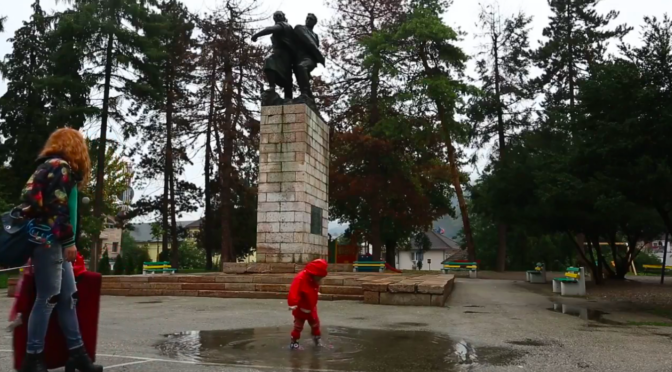THE CHAOTIC LIFE OF NADA KADIĆ follows the story of Nada (Aida Hoffman) and how she attempts to settle into her new life as a mother of a recently diagnosed autistic child, Hava (Hava Dombic). Along the way she begins to understand the sacrifices and difficulties she will have to go through in order to make her daughter happy.
Nada and Hava come as a pair and are rarely seen without each other. Often, we see things from both their perspectives: Nada is a perfectionist who constantly tries to make sure everything runs smoothly and on time, without neglecting her daughter, who always wants to play and cause chaos.
Jorge Bolado’s cinematography in the first shot of the film conveys how deeply Nada is overwhelmed by the colourful world around her. She slowly walks down a flight of stairs outside an apartment complex, holding cute Hava and a radiant orange umbrella which makes her stand out from those around her.
Some POV shots from Hava’s perspective offer an interesting insight into how autistic people are represented in film, and how an autistic person might experience life differently from those not on the spectrum. All the shots from her point of view are always out of focus, giving everything a hazy, dreamy style. You would imagine this would look bad but it adds a new layer of beauty to an already gorgeous film. On top of this, all the sound we hear as Hava is suddenly amplified, and every small detail becomes big. This allows us to empathise with Hava’s position. Nada herself is going on a journey of self-discovery: she’s heading back home, in her father’s quaint and quirky old Yugo car. As they travel together, Nada begins to remember parts of her past, and shares them with Hava.
What is refreshing in the film is the maturity with which it handles its themes. Very little do we hear people criticising how Nada is raising her child, and when we do, those people are made to look ignorant. It shows us that life can be beautiful even when it brings challenges and sacrifices have to be made.

